IV) Laser-Cooled Trapped Atoms for electron scattering Cross Sections
C. Measurement of Ionization cross sections
Finding an upper bound on ionization
Recall that if we turn the trap lasers on immediately after the electron gun pulse, we should retrap almost all the atoms except the ions.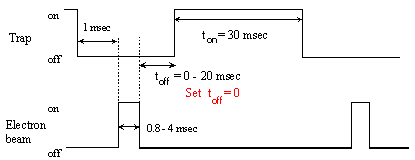
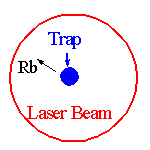 |
Recoiled Rb not enough time to escape, retrapped Rb detected by 780 nm (5p-->5s) fluorescence Rb+ has no fluoresence: not detected, not retrapped. Loss rate mainly due to Rb+ (ionization) |
Some slower moving atoms, however, can still escape. If an atom undergoes an electron-atom collision at the begining of the electron-beam pulse, it has 0.8 to 4msec (the length of the electron-beam pulse) to clear the trap before we turn the lasers back on. Hence, to minimize our scattering losses, we need to also have a very short electron pulse length (tau).
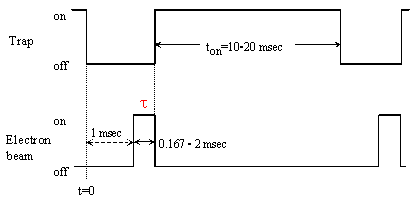

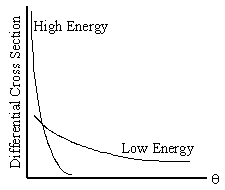
Effect of including small angle scattering
The longer tau is, the slower the atoms can be and still escape. By having a shorter electron beam pulse, and a zero delay time to restart the trap, our losses are down to ionization and smaller angle scattering (fast moving atoms) losses.From the differential cross section plot, we see that large angle scattering is more dominate at lower electron energies. Thus we expect the most serious loss rate dependence on tau for low electron energies, while at higher energies the loss rate is more weakly dependent on tau.
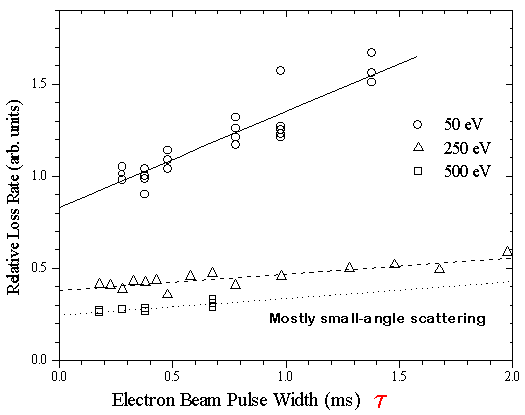
Results: Qion(E)
Using an atom trap we can thus measure a firm upper bound on the ionization cross section to an uncertainity of about 10%. Below is a comparison of results with two other experimental measurements.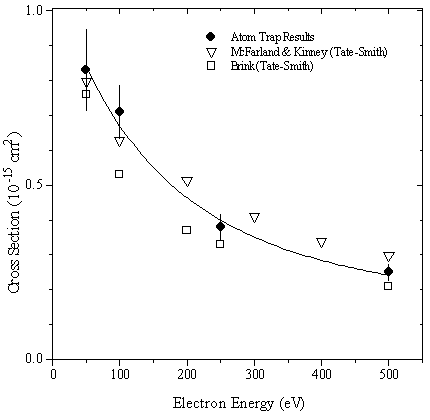

references:
Absolute Electron-Impact Ionization Cross Section Measurements Using a Magneto-Optical Trap R. S. Schappe, T. Walker, L. W. Anderson, and Chun C. Lin, Physical Review Letters 76 (1996) 4328-4331.
 |
 |